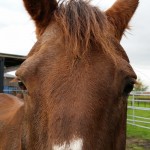 Some time after I started the series, Towards Riding (see my post entitled Towards Riding 1: The Horse on this blog and raised the question of To Ride or Not to Ride (see my post entitled Towards Riding 2 – To Ride or Not to Ride?), Vicki drew my attention to the fact that some of my posts were being quoted in Chuck Mintzlaff’s Friendship Training group on Facebook. Since then the question of whether to ride or not has also been raised in other Facebook groups, including one devoted to a study of Klaus Ferdinand Hempfling’s ideas. Given the influence which Hempfling has had on my own thoughts concerning horses and his approach towards horse-human interaction, I thought it might be helpful to reconsider his views on the question of whether to ride or not, if for no other reason than that it differs so fundamentally from anyone else’s. Then, after I started writing this post, Pip chipped in and added her input. And then shortly after that I received a copy of a book scheduled for publication with a request for feedback and it contained confirmation of Pip’s input.
Some time after I started the series, Towards Riding (see my post entitled Towards Riding 1: The Horse on this blog and raised the question of To Ride or Not to Ride (see my post entitled Towards Riding 2 – To Ride or Not to Ride?), Vicki drew my attention to the fact that some of my posts were being quoted in Chuck Mintzlaff’s Friendship Training group on Facebook. Since then the question of whether to ride or not has also been raised in other Facebook groups, including one devoted to a study of Klaus Ferdinand Hempfling’s ideas. Given the influence which Hempfling has had on my own thoughts concerning horses and his approach towards horse-human interaction, I thought it might be helpful to reconsider his views on the question of whether to ride or not, if for no other reason than that it differs so fundamentally from anyone else’s. Then, after I started writing this post, Pip chipped in and added her input. And then shortly after that I received a copy of a book scheduled for publication with a request for feedback and it contained confirmation of Pip’s input.
To ride or not to ride?
So how does Hempfling answer this question? Does he weigh up the moral issues involved? Does he consider the effects of riding on a horse’s health? Does he actually consider the question at all?
The short and simple answer is this. To ride or not to ride? is a question that simply has no place in Hempfling’s writings. He simply does not consider it. Neither does he bother with any of the moral, health or other dilemmas that the question may pose. Or at least he does not do so directly.
The iceberg of riding
In his book, The Horse Seeks Me, Hempfling devotes an entire page to a graphic depiction of riding as part of his overall approach to horse-human interaction. It takes the form of a tall triangle whose base is at the bottom of the page (p. 315). Of the entire triangle riding represents no more than a tiny tip at its apex. Hempfling refers to the triangle as the “iceberg of riding” and notes that “riding is its smallest part”.
Indeed, the message is driven home by the situation of the chapter on riding and its length in relation to that of the book as a whole. Of all of the 343 pages that make up the book, only 41 deal with riding. That is a mere 12%. As such, riding rests on a huge base of preparation representing 88% of the book and probably an even smaller part of the tip of the iceberg of riding depicted in it. And where is it situated? Right at the end of the book.
Here is some food for thought: ask yourself what percentage riding represents of the time that you spend interacting with your horse. Where you go with the answer is up to you.
The rest of the iceberg
So what is the rest of the iceberg? Immediately below riding we find the segments of the triangle which deal with training and all of it takes place on the ground. First there is “Lungeing” and “The Dance, which are preceded by “Correction in Detail” and “Leading”. The latter is an important first step to any training within Hempfling’s paradigm. In other words, only the top end of Hempfling’s iceberg below riding concerns training, significantly less than half, and all of it comprises groundwork.
Before training we find the segments that deal with the establishment of a connection between horse and human, without which all training and riding are impossible. Working from the bottom up, this entails “Recognising” (or characterising) the horse, followed by the “First Encounter”, which consists of “Closeness and Distance”, “Trust and Dominance”, and “Healing”. If this goes as it should, the result should be the “First Parallel”, where horse and human intuitively move in synchronicity with each other. The connection has been established.
All of this rests on a base which Hempfling calls “Personal Development” and which is divided into two layers. The upper one is “Body Awareness” and the lower one, upon which the entire iceberg rests, is “Spiritual Awareness”. Within Hempfling’s approach towards the horse-human relationship nothing meaningful is possible with horses without this personal development.
Personal development and the horse
Now just consider the breakdown of Hempfling’s iceberg for a moment. I will not even attempt to describe what each collection of segments entails, because I would need a book (or more) to do so. Suffice it to say that many aspects of them are covered in this blog.
Although personal development (body and spiritual awareness) may occur simultaneously with interaction between horse and human, it is obvious that you would require a certain level of development before you could achieve a true connection with a horse. It is also clear that you would need a more advanced level of development, if you wanted to start training a horse. Indeed, the more advanced the training that you seek to pursue, the higher the level of development that you would require.
When to ride
So at what stage does Hempfling advise you to consider riding a horse, if you are intent on doing so? Do you first have to complete a comprehensive course of dressage or any other form of horse training on the ground before you get on? Hempfling is utterly dismissive of this approach. He writes, “As I see it, dressage training is therefore the attempt to make a functioning device out of a natural being” (p. 318). Indeed, implicit in his approach is that the same is true of any form of horse training which seeks to install technical mechanisms of control in a living being.
What is required is the development of your spiritual and bodily prowess to enable you to develop a close relationship with your horse and to be able to use your body to move as one with your equine friend. In Hempfling’s words:
all of the questions of insecurity, becoming acquainted, trust and understanding when interacting with a horse must come before you first get on the horse – before riding – because only then can they be really treated and answered. Being on the horse is just harvesting the fruits. On the horse, you can no longer thoroughly heal and no longer thoroughly correct. (p. 320)
In fact, Hempfling is emphatic that, as long as there are problems on the ground, there will be problems in the saddle:
Problems on the ground and misunderstandings are either transferred quite clearly and visibly to riding or are hidden in one way or another. But they are always there! I have never met a horse-human pair that was an exception to this. (p. 316)
Those of us who have witnessed world champion dressage riders experiencing difficulties while leading their horses might wish to bear this in mind when next we see them achieve another ridiculously high score in an international competition.
Klaus Ferdinand Hempfling training and riding Jo Ross’ little black stallion, Habanero
It is also worth noting that, when explaining his approach to riding in both The Horse Seeks Me and his videos, Hempfling resurrects the horse with whom he enjoyed the closest relationship, the sensitive chestnut gelding, Janosch. This is the only horse that we ever get to see Hempfling riding without any tack at all. We may also wish to bear in mind that those and all of the other images featuring Hempfling astride a horse which are publicly available date from well before the end of the last century with only one exception, Habanero, the small, black stallion belonging to his then body awareness coach, Jo Ross, whom he trained and rode during the one-year course which Vicki and I were supposed to attend. It is clear that to Hempfling riding is a special activity which only becomes relevant after the lengthy preparation of both horse and human but predominantly the latter.
space
The implications
Not much imagination is required to conclude that the implications of Hempfling’s approach are potentially profound. In the first place, some if not most of us will never achieve what is required on the ground before contemplating riding. Within Hempfling’s approach riding is the prerogative of the few who manage to achieve the spiritual and bodily level of personal development required to befriend and guide a horse without force or restraint. And the few who manage to achieve such a level of personal development will only be ready to ride after lengthy preparation.
Viewed from Hempfling’s perspective, it is clear that the vast majority of people who currently relate to their horses with their bums should not be riding or at least not yet and their horses would be far better off if they were to dismount now and stay off them until they (the horse and they human) are ready, if ever. It is also clear that as part of the Hempfling approach those few horses that would be ridden without force or restraint would also be far better off.
To those horse riders who maintain that they use a “bit of Hempfling” in their approach towards horses, training and riding, it should be starkly clear that you have profoundly misunderstood what Hempfling is about. You may be using “bits” but you are definitely not “doing Hempfling”, for the chances are that, if you really were, you would not be riding or at least not yet.
Destiny
You may be aware that I have spent much of this year preparing Pip and myself for riding. Originally, I had hoped to ride my mare in the spring but postponed it, because I felt that we still needed to address her insecurity at liberty. October was to be the month in which it was finally going to happen, until destiny intervened.
In the second week of October I pulled the calf muscle in my right leg, while Vicki and I were running with the horses in the forest. Rest was required and I acceded, if only in relative terms. Just as I seemed to be recovering disaster struck. Pip came down with an injury which caused her to go lame in her right foreleg. Last week the vet conducted a sonar scan and confirmed that she has injured her deep digital flexor tendon at the level of the distal check or accessory ligament. Fortunately, it is a general swelling rather than a tear with no sign of any external force but it is serious enough to put Pip out of all but tightly controlled physical action for at least six months.
For the moment Pip is confined to a small enclosure with a walk-in, walk-out stable, which opens onto a small adjoining field, where she grazes during the day. Her enclosure is next to that of the herd, so she is still able to maintain contact with the other horses and Anaïs in particular. Every day I walk her for five minutes, hose her leg down with cold water and then apply some gel with an unpronouncable name, which the vet insists on. In addition, Pip is also on homeopathics for a few days. So far the swelling remains unchanged. Vicki and I bring the mares together at times to interact with each other and us while we try out various liberty exercises (in Pip’s case, those that do not involve anything more than the movement of a body part).
Pip’s input
Although I cannot explain how this accident happened, it comes as no surprise to me that it has affected Pip’s vulnerable leg. With its long toe and underrun heels coupled with constant movement on the hard surface of the enclosure in which our horses are kept, the tendons in that leg were always going to be a bit vulnerable, although the progress which Pip has made over the past couple of years and which are documented in this blog led me to believe that such an injury would be unlikely.
What I did not take into account was the distinct possibility of an injury due to herd dynamics within a relatively confined space. At roughly the same time that Pip came down with her injury, we discovered a rather large hoofprint on Anaïs’ hindquarters just to the right of her tail with some hair missing from the place where the toe must have made impact. I suspect that the mares were standing together, when Anaïs got kicked and both of them took evasive action with Pip twisting her vulnerable leg in the process. The absence of any evidence of external force would seem to confirm such or a similar scenario.
Pip’s input as I now see it is that riding her is no longer an option that I am willing to consider, even once she has recovered. The chances of a recurrence are simply too great. Pip is never going to be ridden again. End of story. This is the least I can do for my equine friend. Perhaps I was mad to ever consider the possibility, especially with her history. What was I thinking?
The power of words
A couple of days after the vet’s visit I received the draft of a book from a young woman whom I met at the Nevzorov Haute Ecole clinic hosted by Michael Bevilacqua and Cloé Lacroix in Québec, Canada, in 2012. It documents her journey and that with her horses, telling a story and containing insights which resonate deeply within me partly because of similarities of experience and partly because of what Pip seems to be showing me now.
One of the questions this book raises in relation to my interaction with Pip or any other horse concerns the extent to which I am prepared to go, the things I am willing to do and the tools I choose to resort to in order to ride. To be specific, this powerful book poses the question as to whether I would go to that extent, do those things and use those tools on and with a creature whom I claim to love and call a friend. This is a highly confronting question and, if I am to look at myself in the mirror and be very honest with the person I see in it, and I simply have to say that I can no longer do it. If love is liberating, then I want Pip to be as free as the sea within the confines of its shores.
So what now?
Now a whole new experience has begun. Pip and I are going to have to learn to find new ways of interacting with each other. I have never been down this path before, so it will be an entirely new experience. Already I can see some benefits. Pip is having to spare her vulnerable leg and rely more on her relatively underdeveloped left foreleg. This should help her greatly. We will be learning new games to keep her muscles strong while she is relatively inactive. There will no longer be any possibility of the prospect of riding bringing any pressure to bear on our relationship. In addition, because Vicki and I now need to exercise the mares separately from each other, we are weaning them off their virtual dependence on each other’s company.
At this point in time I do not know whether Pip will ever return to the herd at her current livery yard. I rather suspect that it is quite possible she will not. Although the principle of keeping horses in a herd is fairly sound, the facilities need to be adequate for the number of horses involved. To a large extent they are with one major exception. There are only two entrances to the large indoor area to which the horses have free access. One is large enough to accommodate several horses at the same time, while the other can only accommodate one. All too often I have seen a commotion in the indoor area, with the result that up to ten or more horses simultaneously rush towards the exits but not all of them can fit through at the same time. The twisting and turning that then ensues has long seemed to me to be an accident waiting to happen. At this point in time I am not sure that I am prepared to put Pip back into such a situation again.
Where that will take us, is a question for the future. For the moment Pip is out of the herd and on the mend. That is enough for now.
Appeal for help
If you have experience helping a horse to recover from a tendon injury and there is anything that you would like to recommend, please do not hesitate to contact me either through this blog or Facebook (see link below).
Horses and Humans on Facebook
May I remind you that we now have a Horses and Humans group on Facebook. If you would like to leave a comment, you can do so on this blog or on the the Horses and Humans Facebook group page. All new posts will feature on that page along with additional content posted by any of our members. Please feel free to join us at:
https://www.facebook.com/groups/horsesandhumans/
There is also a Horses and Humans publications page, which contains information concerning the publications released under the Horses and Humans imprint. Some of those publications will be free of charge. You will find it here:
https://www.facebook.com/horsesandhumans
I also have a Facebook page through which you may contact me. You will find it at:
https://www.facebook.com/andrewglynsmail
Equine Touch
Vicki is operating two websites for Equine Touch at present. Listed as Humans for Horses, you can find the ordinary website at:
http://www.humansforhorses.com/
and the Facebook page at:

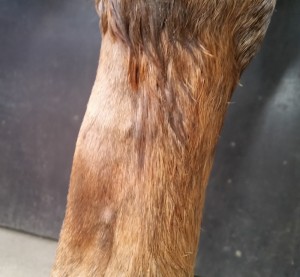
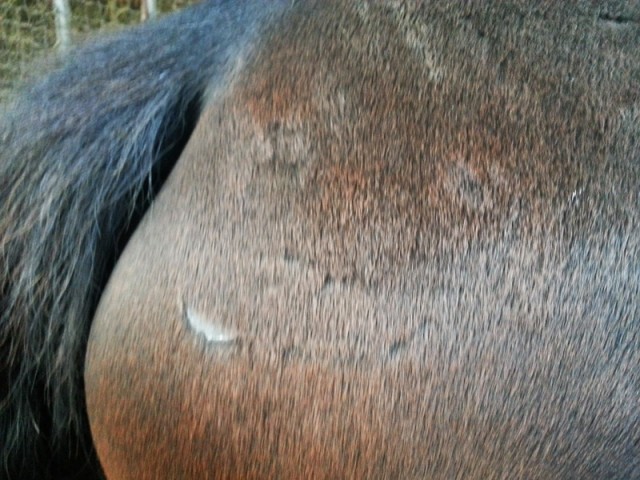
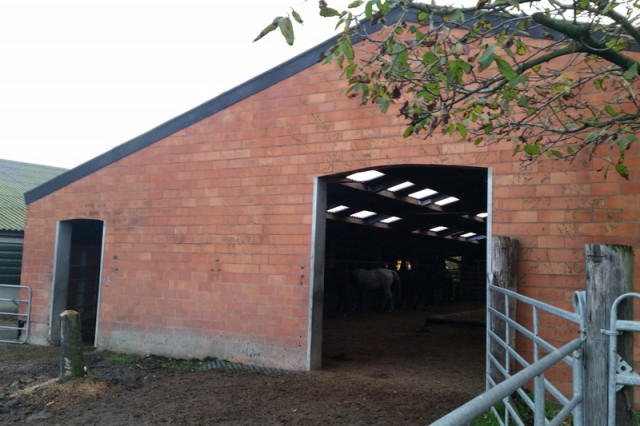

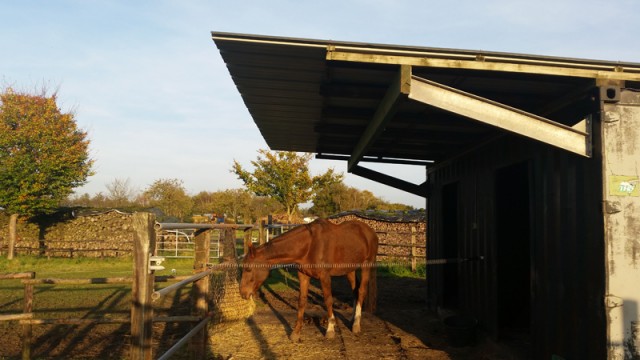



I would recommend you look into LED Red Light Therapy. There are several tools out there, but I am 100% behind the Aah Light.
Have you read the Tao of Equs? Linda Kohanov started her equine journey hand walking her dream “riding” mare through the Arizona desert as rehabilitation for an injury and was instead enlightened to a new understanding of the horse/human relationship.
I do not ride. I believe riding does harm. I know my riding does harm and practicing that riding is insanity…doing the same thing over and over expecting a different result. I cannot in good conscience send my horses down the road for others to harm. So they live with me and I do my best to care for them and create a place where they are comfortable, reasonably stimulated and loved.
I have been thinking, I would like to begin a program of groundwork and hand walking to help them stay fit. You have inspired me to re-read KFH’s books and make a start.
Thanks, Kathy
Hello Andrew!
What a pivotal moment in the relationship between you and Pip, I just know you two have
so much ahead of you to look forward to 🙂
As Kathy says above, LED Red Light Therapy is meant to have amazing results!
Another thing you may want to look into is healing clays. Both my dog Charlie and I sustained achilles tendon injuries on the same leg, in the same week about two weeks ago. Charlie has unfortunately ruptured his so he is going into surgery, but mine is just tendonitis from my new exercise schedule. Anyway, I have been using bentonite clay as a soak and poultice every few days for both Charlie and I and it has really taken some of my pain away and is also helping charlie’s leg swelling go down! I also have used bentonite clay soaks for when Cisco had a hoof abscess and it dramatically sped up the rupture/healing time.
I wonder whether it would help Pip?
Thank you for your blog entry, the truth in it is very refreshing!
Hope you and Vicki are well!
Hello Andrew
Your journey has been mine in many ways. It would be a book as well and frankly the energy needed for that is not in the cards. I am 64 and know that riding is not fair to me or a horse. I’ll be honest and say that my own safety is the primary motivation for my “grounding.” I rode as a girl on my Dad’s farm. My career as a teacher and later marriage and three daughters kept me away from my old passion until 2005 when I purchased a black mare (gaited), a breed supposedly for people with spinal issues. Soon I discovered Chinok’s club foot was causing lameness and so began my journey of healing…mostly mine. In the end I bred her and today I have her 3 yr.old filly Gaia and a gelding, Shaman who has taught her how to be a horse. Not long after Chinook gave birth I had to euthanize her, as the stress of the pregnancy made her profoundly lame. Gaia has inherited the club foot on the same front leg…very distressing when I learned of this.
All through this journey, I kept learning how to relate to my horse in such a beautiful unseen way…no training…just fun. They are kept in a very natural environment here in rural Nova Scotia, Canada and are very fit.
I also use ‘homeopathy’ extensively, which I have learned to use very effectively for people and animals…it is such a powerful, quantum system of medicine. I have never needed a vet. I am also working with my farrier on Gaia’s club foot and the angle has begun to drop…I couldn’t believe it possible, nor did the farrier. My care for my horses and my cats (people, too) takes up so much of my energy…but I so love my life.
If you wish, I may be able to offer solutions to Pip’s injury that may speed up her healing. Blessings to you and your wife Vicki and your lovely herd of mares.
Nameste, Mary
DMSO USE FOR HORSES
http://www.horses-and-horse-information.com/articles/0200dmso.shtml
http://www.proequinegrooms.com/index.php/tips/barn-management/dmso-all-you-need-to-know/
http://www.stablemade.com/hproducts/products/dmso.htm
http://www.dailymile.com/blog/health/dmso-the-best-injury-treatment-youve-never-heard-of